- Home
- Mack Reynolds
Trojan Orbit
Trojan Orbit Read online
Contents
Copyright Information
A Message to the Reader
Chapter One
Chapter Two
Chapter Three
Chapter Four
Chapter Five
Chapter Six
Chapter Seven
Chapter Eight
Chapter Nine
Chapter Ten
Chapter Eleven
Chapter Twelve
Chapter Thirteen
Chapter Fourteen
Chapter Fifteen
Chapter Sixteen
Chapter Seventeen
Chapter Eighteen
Aftermath
Copyright Information
Copyright © 1985 by the Literary Estate of Mack Reynolds.
All rights reserved.
*
For more information, contact:
www.wildsidepress.com
A Message to the Reader
Before his death in 1983 after a long illness, Mack Reynolds had taken several novels to first-draft stage and then, perhaps driven by a sense of mortal urgency, gone on to the next. When it became clear that Mack would be unable to bring them to completion, I, with Mack’s and later his estate’s approval, commissioned Dean Ing to take the entire group to a fully polished state. Dean’s purpose has not been to collaborate posthumously, but to finish them exactly as Mack Reynolds writing at the utter top of his form would have done.
We believe that Dean has succeeded to an almost uncanny degree. For any writer, and particularly one of Ing’s stature, to so subordinate his own authorial personality is a remarkable achievement.
Requiescat in pacem, Mack.
—Jim Baen
* * * *
I liked Mack; I liked the way he lived; and I liked his tequila. That’s why…
—Dean Ing
Chapter One
“There are three kinds of people who go to work in Alaska: those who like adventurous life; those who have a romantic but unrealistic notion of adventurous life... and return as soon as the first contract is over; and those who go there for money, even though they hate the life. The percentage of the second and third categories is very large. The same three types might be attracted to space communities.’’
—Magoroh Maruyama,
Professor of Systems Science,
Portland State University
*
Rick Venner got off the second-class bus at San Miguel de Allende, in the north-central State of Guanajuato, Mexico. He first secured his sole piece of luggage, then went on into the small bus station and checked it.
He looked like an easygoing type and it extended to his clothing. He was fresh and friendly of face, and at first meeting, at least, could project himself as much as ten years younger than his thirty-four years. Only his eyes detracted from his cheerful good looks; they were a rather colorless blue-green. He moved easily, almost lazily, but one got the impression that he’d stand his own on a tennis court or even perhaps at amateur boxing.
He looked up and down the street, decided the center of town was below, put his hands in his pockets, and strolled in that direction. At the first corner, he noted that the street was Calle San Francisco. There was a small, neat plaza there, flanked on two sides by Spanish colonial churches. On the corner opposite him, on a pedestal, stood a weathered bronze statue of a medieval gentleman, telescope in one hand, a roll of papers in the other. Rick looked up at it.
A voice beside him said, “Columbus. There are only three statues of him in all Latin America. The Indians wish the hell that he’d stayed home.”
Rick looked over at the other, an obvious local inhabitant, about Rick’s own age, and even more lackadaisical in his dress.
Rick grinned and said, “I don’t blame them. Look, is there any place in town where I can buy a guidebook?”
The other pointed. “Yeah, go on down to the Zócalo—that’s the central square—and cross it diagonally. There’s an English-language bookstore called El Colibri under the arcade.”
Rick told him thanks and went on.
The town was unique—an art colony. He’d already read a little about it in tourist folders. A Spanish colonial national monument. There were no signs allowed in the city limits, neon or otherwise; no supermarkets, no service stations, no advertising. You weren’t allowed to build in San Miguel other than in accord with the 17th and 18th century local architecture. Except for some electric wires and a few TV and Tri-Di antennae, you could have been in a two-or three-centuries-old Spanish town of about 25,000 people, if it hadn’t been for the vehicles on the streets. Most of these were recent-model hovercars, and possibly a third of them had American license plates.
He arrived at the square and crossed it as instructed. It was the typical Mexican plaza. He had witnessed many in his crossing of the country by train and bus, after entering through Merida, the capital of Yucatan. This one seemed more pleasant, cleaner, better kept than most. There was a bandstand in its center, trees with steel benches in their shade, nice stretches of flowers and grass. The Zócalo, as his informant had named it, was flanked on three sides by old Spanish colonial buildings with shaded arches and, on the fourth side, a cathedral-sized church at least as old as any of the other architectural specimens.
El Colibri was largely devoted to paperbacks and art supplies, and was presided over by an elderly American woman. Yes, she had a guide, complete with town map. He bought one with pesos, not too sure about the money as yet.
She obviously typed him immediately—though quite inaccurately. She said, “In town for long? An artist?”
“In a way,” he agreed, smiling. “There wouldn’t be a telephone or some other kind of directory, would there?”
She brought forth a paperback booklet, obviously locally printed. “The Juarde,” she said. “Sort of a joke; the Mexican equivalent of ‘Who Are They?’ It lists all the permanent gringos in town, addresses and phones. It’s fifty pesos.”
He paid up, took the two books, and returned to the square. He found an empty bench facing the looming church, stuck the directory in his pocket, and turned to the map in the guide.
Rick Venner felt uneasy in a town he didn’t know. He liked to have the layout. He liked to know where the streets went, particularly the roads leading out. He studied the map for a while, then brought forth from a side pocket of his jacket a Mexican road map. He located the State of Guanajuato, found San Miguel de Allende, and traced the routes leading respectively south to Quéretaro, northwest to Celaya, and northeast to Dolores Hidalgo, and hence to Texas.
He came to his feet then, the city map in hand, and for the next couple of hours walked around the art colony, up one street, down another. He decided that it must be a nice place to live, in a quiet sort of way. By the looks of it, about a quarter of the population was American or Canadian. From time to time, he’d run into an artist sketching one of the old landmarks, or seated before an easel painting the street market, or whatever.
He went back to the Zócalo and down the line of taxis at the stand there, asking each of the drivers if he spoke English. One did and Rick climbed into his cab, sitting next to him in the front seat.
He had the mystified driver take him out of town on each of the three main exit roads for a short way. He asked occasional questions. Querétaro was about forty miles south, Celaya was about thirty-five miles farther on, and Dolores Hidalgo was not quite thirty miles.
Finally satisfied, he brought forth his directory, looked up the name Pavel Meer, and instructed the cabbie to take him to Calle Nuñez 32.
From outside, the house was on the unprepossessing side, but as a result of his walking, Rick Venner had already found that this was as meaningless in Mexico as it was in Spain or
Morocco. On several occasions there had been large doors, open. Inside could be spotted extensive gardens, impressive-looking patios, expensive-looking Spanish colonial homes. No, you couldn’t tell from the outside what was beyond the walls. It might be a ruin or a mansion.
Rick got out and said to the driver, “How much, chum-pal?”
“Forty pesos, Señor.”
Rick grinned and brought forth a coin. “Double or nothing?”
The driver’s eyes widened in surprise, but he said, “Sí, okay.”
“You call it,” Rick said.
“Heads.”
Rick flipped. It came up tails.
“Tough luck,” Rick said sympathetically and turned and headed for the door.
There was an iron knocker, rather than an identity screen or even a bell. Rick knocked. It was answered by a girl who was very neatly, very colorfully dressed, but in cheap styles from north of the border, not traditional Mexican ones. Her jet-black hair was waist-long and in braids, with red yarn braided into the tips. She was possibly eighteen years of age and had just enough Spanish or Norte Americana blood in her to avoid heavy Indian features.
Rick said in the atrocious Spanish he had picked up over the years in Spain, Argentina, and Uruguay, “Por favor, quiero uh, hablar con Señor Meer.”
She flashed him a smile and held the door wide open.
Beyond was a long patio, complete with waterless stone fountain, with two fabulous mats of bougainvillea, one red and one purplish, running up the walls. There was also a huge iron cage in which a hyacinth macaw swung on a perch.
The macaw said, “Hello, Pancho.”
Rich said, “The name’s Rick. But hello.”
“Quiet,” the bird told him.
Rick followed the girl through the patio into a living room. Besides the heavy, obviously local furniture, the room was notable for a monstrous fireplace and a multitude of oils, watercolors, lithographs, etchings, and charcoal sketches—all seemingly crafted by the same hand. The walls were covered with them.
The girl led the way through to the next room, a library. Save for the space allotted to bookshelves—filled mostly with volumes on art—and a smaller fireplace, the walls were also devoted to the graphic arts. The next room was for dining, small and obviously not often utilized; it too had its quota of art, in profusion. A kitchen walled in tile could be seen off to the side. There was a small table in the kitchen; Rick suspected that most of the household eating was done there.
They went out a back door into another patio, this one dominated by a large shade-giving mesquite tree, and across it to a separate building. The girl knocked softly.
The man who answered wore denim pants, Mexican leather huaraches on his feet, a paint-bespattered smock and, of all things, a beret on his head. He had a paintbrush in one hand. He was somewhere in his early sixties and affected a graying beard in an era when facial hair was out of style. His eyes were a bit rheumy, but wise, and his cheeks were as red as those of Santa Claus, though hardly as a result of any cold weather.
He looked inquiringly, rather than speaking.
Rick said, “My name’s Rick Venner. I’m interested in purchasing some of your work.”
The other eyed him questioningly, and murmured in a small, womanish voice, “You do not look like a collector, sir. However, I have a show currently at La Galeria, down on the square.”
Rick smiled. “I like to avoid the forty percent, or whatever it is those gallery robbers extract from you.”
“I see. Very well, come in. I am cleaning my brushes. Gracias; es todo, Octoviana,” he said to the servant girl.
She smiled, not quite curtsying, and, her pigtails aswirl, turned and went back to the house proper. It occurred to Rick, now, that she must have posed for several of the nudes he had seen down below. The old boy still had an eye for beauty—or something for sex.
The high-ceilinged room beyond, into which he was ushered, was an artist’s madhouse. Aside from oils and watercolors, finished and otherwise, there was lithography equipment, engraving tools and raw materials and, in one corner, looking as though it hadn’t been used for a considerable time, even a potter’s wheel. Not that Rick recognized most of the tools of the artist.
On an easel was a painting, possibly four feet square, depicting a San Miguel fiesta, complete with Indian folk dancers. It was hardly more than begun. Bright reds and yellows predominated in color.
Pavel Meer said in his feminine voice, “Sit down, if you can find a clean spot, Mr.…uh…”
“Venner,” Rick said, carefully removing a sketch and several painter’s rags from a cane and leather chair. “Rick Venner.”
The other dipped the brush he was holding into a dirty glass of turpentine, then rubbed it onto a cloth.
He said, “What can I really do for you?”
“The maid…or anyone else…can’t hear us?”
The other’s shaggy eyebrows went up. “She speaks no English, and there is no one else in the house.”
“No chances of a bug?”
“I see,” Meer said, putting the brush into a dirty water glass and taking up a different one. “A bug, in Mexico? In the home of an established artist? Please, Mr.…uh, Venner,” he added wryly. “Besides, I have an electronic mop. Believe me, we are not being monitored. Now, what did you wish to see me for?”
“I want to become a worker in the Island at Lagrange Five.” Rick grinned at the man’s odd glance. “You know—the space colony near the moon.”
The other squinted at him quizzically. “I see. And why not simply apply for a job?”
“I don’t seem to have the qualifications.”
Pavel Meer put down the brush and turned back to his visitor. “Why come to me? I’m an artist.”
“I know,” Rich said. “And the best. You’re The Penman. Damn nice cover you have here.” He indicated the studio with a sweep of an easy hand.
“It’s authentic,” his host told him. “I am a reasonably successful artist. I have shown internationally. There are none to say that my income is not all derived from my artistic sales. Now then, who in the hell sent you?”
“Paul Lund in Tangier.”
“I see. And how is Paul?”
“His TB’s still bothering him. He told me to tell you that the Funked-Out Kid was sneezed in London. It seems as though he didn’t properly cool off a Winchell he’d taken a score from. Three years in the nick.”
Meer nodded. “The Kid was never much of a brain, as grifters go. In the old days, I was on a couple of, ah, assignments with him. Let’s go into the house and have a drink.”
“I was hoping you’d ask,” Rick said.
The artist shed his smock to reveal a white Yucatan shirt, somewhat wrinkled, and led the way back toward the house proper.
“Nice place you’ve got here,” Rick complimented.
“Bought it some years ago, back when I was on the run, for only eight thousand dollars,” Meer said absently. “Renovated it a bit, over the years, whenever my taw was in good enough shape. Really old. The three basic rooms are older than the Pilgrims.”
Rick looked at him in surprise. “The Pilgrims? You mean in New England?”
The other skirted a flower bed on his way to the back door. “That’s right. San Miguel’s a really old town. The Spanish were up here founding it only twenty years after Cortés, ah, liberated Mexico City from the Aztecs.”
In the main house they found Octoviana dusting in the library.
Meer said to her in Spanish, “Why don’t you do the marketing now, chica? I have business.”
She did her little half-curtsy and darted from the room.
The artist opened a cabinet door and brought forth a square, squat bottle and two three-ounce glasses. “Tequila all right?” he said. “I believe in drinking the local product. Scotch in England, brandy in France, schnapps in Germany, bourbon in the States.”
“Wizard,” Rick said, taking a chair.
The other poured and brought the drin
ks over. “Would you like lime and salt?” he said.
“Not necessary.” Rick sipped the fiery spirits. In actuality, it was smooth, as tequila went; the best he’d ever had.
Pavel Meer sat on a couch, looked over inquiringly, and said, “When were you in Tangier?”
“About ten days ago.”
“I see.” The other knocked back about half of the two ounces of tequila in his glass, then said, “How’d the romp work out, Rocks?”
The blue-green eyes went icy. “The name’s Rick Venner.”
“The name is Rocks Weil and you just pulled off the biggest romp of your career two weeks ago.”
“How’d you make me? I don’t like that. I planned this get with a hell of a lot of care.”
The artist said easily, “You had to be some kind of a celebrity or Paul wouldn’t have sent you. Our code for an introduction is for you to mention the Funked-Out Kid. Two weeks ago, in London, somebody knocked off three pendeloque-cut, colorless diamonds. The biggest was 69.42 carats; both of the others were about half that size. The romp had all the earmarks of a Rocks Weil job. Now, two weeks later, you turn up with an introduction from Paul Lund, the town crier of the grifter’s world. And you want me to supply you with papers to get you into Island One at Lagrange Five, the most perfect place to go to ground that’s ever been dreamed up. And you’re here, and that’s smart, and Weil is very smart. I’m betting that you’re Rocks Weil. How’d the romp work out, Rocks?”
Rick sighed, finished his drink, and put the glass down on a side table.
He said, “The heist itself was routine. It was flogging the stones that needed the finesse. You’ve got your work cut out, usually, getting rid of a couple million dollars’ worth of diamonds, especially unflawed colorless stones of any size. Every one of those in the world is known to every jeweler worth his salt.”
“Of course,” the artist nodded. “How do you plan to fence them, Rocks?”
“They’re already sold. To an Arab. They’re one people who don’t give a damn about the source. Nobody outside his harem will ever see them again. He paid in gold, about one-third of the real value, which is good, of course. I worked out a way to get the gold into India and stash it. It can sit there for the five years I’m in Lagrange Five. When I root it out, no matter what’s happened to the world’s currencies in the way of inflation, it’ll still have at least the same true value it has now. I’ll take the gold to Switzerland, flog it, and put the whole score into an International Credit Account. By that time, I’ll largely be forgotten, and Rocks Weil will never pull another job.”

 Happy Ending
Happy Ending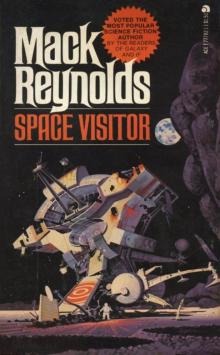 Space Visitor
Space Visitor A Kiss Before Loving
A Kiss Before Loving Episode on the Riviera
Episode on the Riviera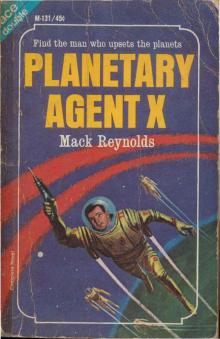 Planetary Agent X
Planetary Agent X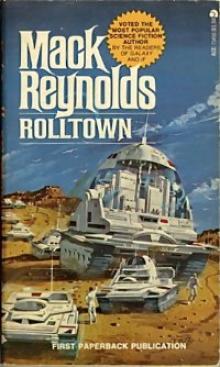 Rolltown bh-3
Rolltown bh-3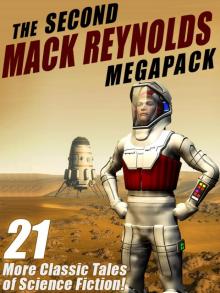 The Second Mack Reynolds Megapack
The Second Mack Reynolds Megapack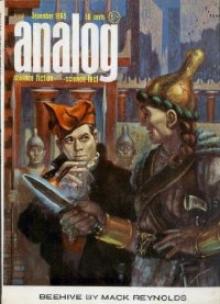 Dawnman Planet up-2
Dawnman Planet up-2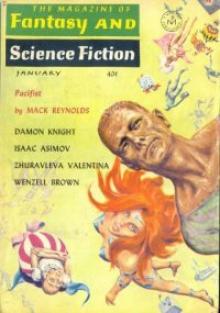 Pacifist
Pacifist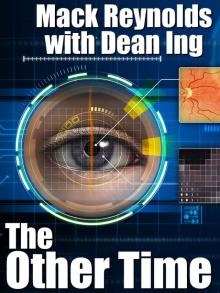 The Other Time
The Other Time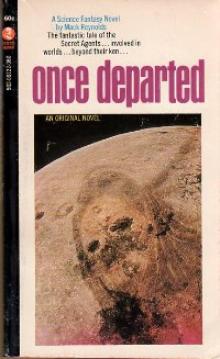 Once Departed
Once Departed IQ
IQ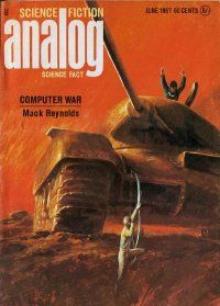 Computer War
Computer War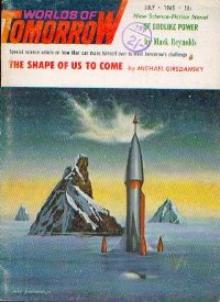 Earth Unaware
Earth Unaware The Rival Rigelians up-3
The Rival Rigelians up-3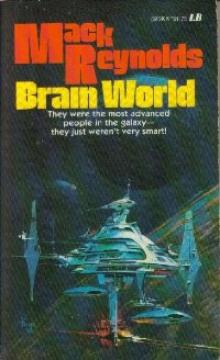 Brain World up-7
Brain World up-7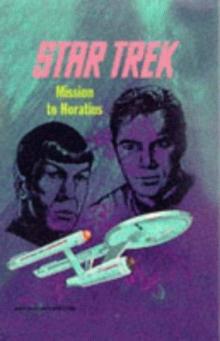 Star Trek - TOS - Mission to Horatius
Star Trek - TOS - Mission to Horatius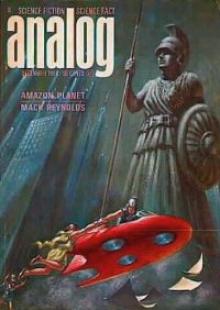 Amazon Planet up-5
Amazon Planet up-5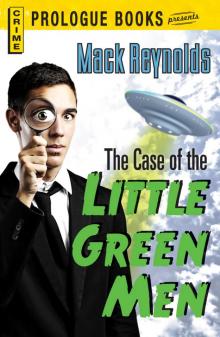 The Case of the Little Green Men
The Case of the Little Green Men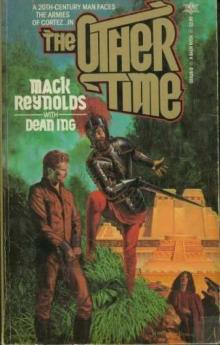 Other Time
Other Time The Mack Reynolds Megapack
The Mack Reynolds Megapack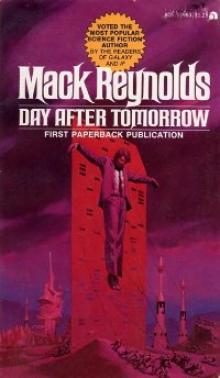 Day After Tomorrow
Day After Tomorrow The Devils & Demons MEGAPACK ®: 25 Modern and Classic Tales
The Devils & Demons MEGAPACK ®: 25 Modern and Classic Tales Mission to Horatius
Mission to Horatius Ability Quotient
Ability Quotient Galactic Medal of Honor
Galactic Medal of Honor Trojan Orbit
Trojan Orbit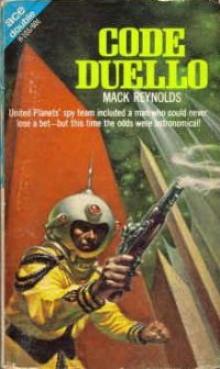 Code Duello up-4
Code Duello up-4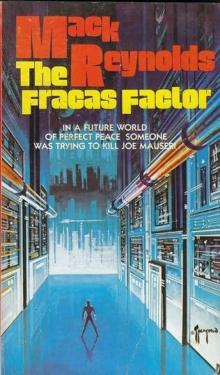 The Fracas Factor
The Fracas Factor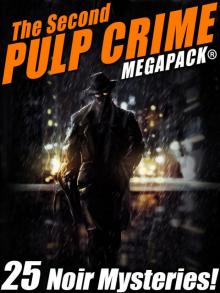 The Second Pulp Crime
The Second Pulp Crime Deathwish World
Deathwish World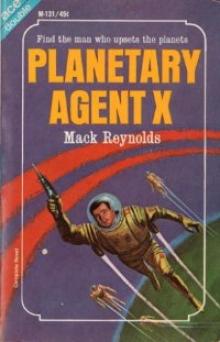 Planetary Agent X up-1
Planetary Agent X up-1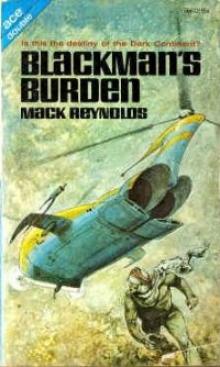 Blackman' Burden na-1
Blackman' Burden na-1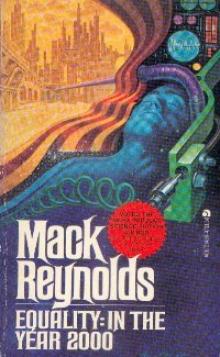 Equality: In the Year 2000 jw-2
Equality: In the Year 2000 jw-2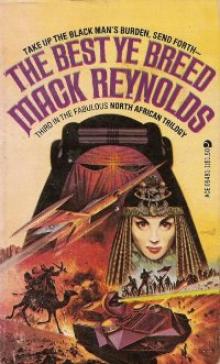 The Best Ye Breed na-3
The Best Ye Breed na-3 The Jet Set
The Jet Set The Rival Rigelians
The Rival Rigelians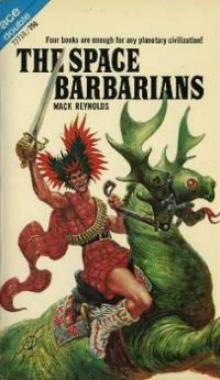 The Space Barbarians
The Space Barbarians